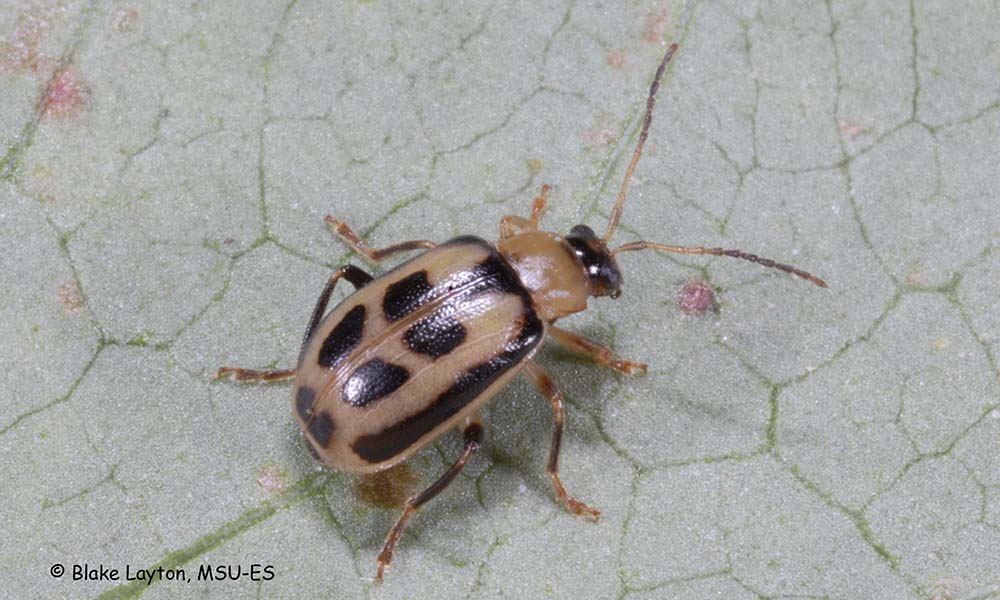Bean Leaf Beetle | Vol. 3, No. 8

Cerotoma trifurcata
Order; Coleoptera
Family: Chrysomelidae
“What’s chewing all of these holes in the leaves of our young pea plants?” Adult bean leaf beetles feed on leaves of legume vegetables such as green beans, butter beans, and southern peas, leaving small holes in the leaves. Gardeners most often notice this damage on young, recently-emerged plants but sometimes have difficulty identifying the pest because bean leaf beetles vary in color. Many are tan with black markings, like the one in the photo, but they can also be red, pink, or salmon colored, and may or may not have the black markings. The more colorful specimens are often mistaken for lady beetles. The larvae feed underground on the roots and nitrogen-fixing nodules. Adult beetles will also chew holes in the pods, and they vector several important virus diseases, but it is the early damage to seedling beans and peas that causes most concern in home gardens. Bean leaf beetles are also important pests of soybeans, and gardens growing near soybean fields can experience heavy infestations, especially if the peas or beans are planted so early that they emerge before the soybeans. Bean leaf beetles overwinter as adults, and beetles emerging from overwintering are very good at finding the first young legume seedlings in the area.
Control: It does little harm to have bean leaf beetles chew a few holes in the leaves of young pea and bean plants, so don’t be too hasty to spray for low numbers of bean leaf beetles. Control heavy infestations by spraying with products containing bifenthrin or carbaryl that are labeled for use on peas and beans.
See page 5-6, and pages 12-14 of Extension Publication 2347, Insect Pests of the Home Vegetable Garden for more information on bean leaf beetles.
Blake Layton, Extension Entomology Specialist, Mississippi State University Extension Service.
The information given here is for educational purposes only. Always read and follow current label directions. Specific commercial products are mentioned as examples only and reference to specific products or trade names is made with the understanding that no discrimination is intended to other products that may also be suitable and appropriately labeled.
Sign up to receive Bug's Eye View.

